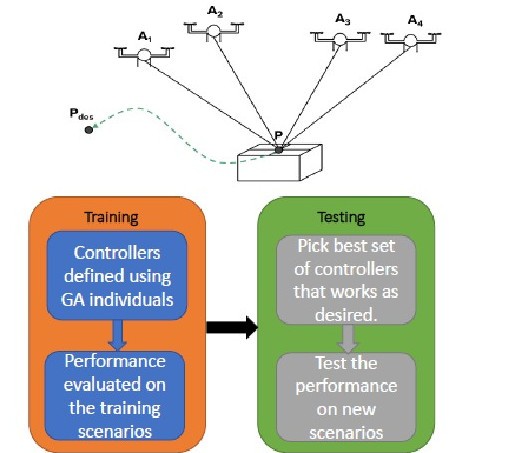Drone Team Collaboration as A Distributed System
Research Goal
Development of a decentralized system of collaborative UAVs that can bring a load to any arbitrarily defined target pose.
Strategic Alignment
Decentralized collaborative system of UAVs provide the ability to lift heavy loads while also simultaneously reducing the dependence on any individual UAV in the team.
Objectives
- Develop a physics based simulation environment for multi-UAV-load system.
- Develop machine learning based controllers for each UAV with the goal of bringing the load to any pose, by working as a team.
- Extend the methodology to real-life control of multiple collaborative UAVs
Approach
Apply Genetic Fuzzy Methodology (GFM) or Machine Learning (ML) techniques to train the system of UAVs to achieve the common goal of bring the payload to any arbitrary pose. By penalizing undesirable actions, GA/ML can tune the controller parameters to ensure near-optimal performance by the team of UAVs.
Applications
- Lifting heavy objects in industrial and military missions.
- Agile communication and connection for fast responding natural disasters.
- Agile sensor networking for quick situation awareness.
State of the Art
UAV team activities are mostly limited to formation flights coordinated by a centralized controller which is vulnerable to security or reliability problems. An individual UAV's behavior can easily affect the performance of the entire team.
